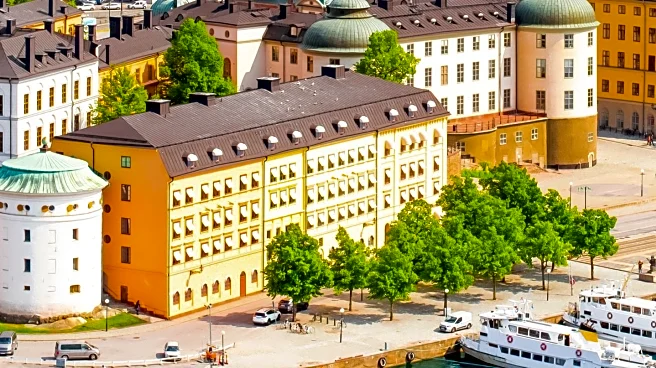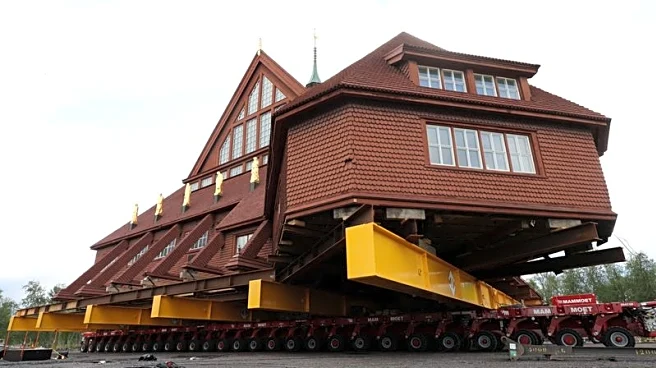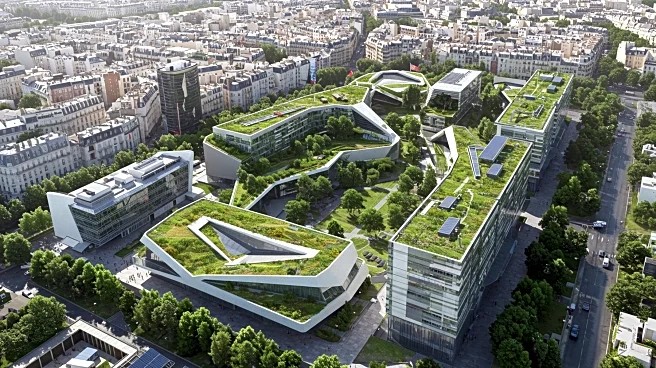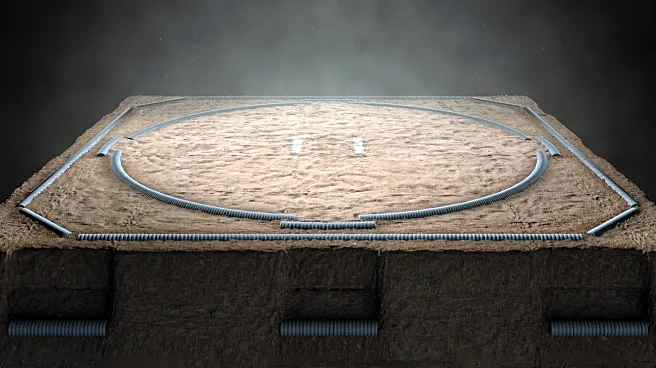What's Happening?
A 113-year-old church in Kiruna, Sweden, is being relocated due to ground subsidence risks caused by extensive iron ore mining. The church, a significant cultural and spiritual landmark, is being moved 5 kilometers to a new city center. The relocation process involves transporting the entire structure on giant trailers, a journey expected to take two days. This move is part of a broader effort to relocate buildings in Kiruna to safer ground, as mining activities threaten infrastructure stability. The church's relocation is a complex engineering feat, requiring careful planning to preserve its interior treasures, including a great altar painting and a 1,000-pipe organ.
Why It's Important?
The relocation of Kiruna Church underscores the impact of industrial activities on communities and cultural heritage. As mining operations continue to expand, they pose risks to infrastructure and necessitate significant urban planning efforts. The church's move highlights the challenges of balancing economic interests with cultural preservation. It also reflects the commitment of stakeholders, including LKAB, the mining operator, to address these challenges responsibly. The relocation is a symbolic moment for residents, representing both the preservation of history and adaptation to changing environmental conditions.
What's Next?
Following the church's relocation, other buildings in Kiruna may undergo similar processes to ensure safety and stability. The city's development company, along with LKAB, will continue to manage the relocation efforts, which are estimated to cost over 10 billion Swedish krona. The successful completion of the church's move could serve as a model for future relocations, demonstrating the feasibility of preserving cultural landmarks amidst industrial expansion. Community engagement and support will be crucial in navigating the emotional and logistical aspects of these changes.
Beyond the Headlines
The relocation raises broader questions about the sustainability of mining practices and their long-term impact on communities. It prompts discussions on the ethical responsibilities of corporations in preserving cultural heritage while pursuing economic growth. The move also highlights the resilience of communities in adapting to environmental changes and the importance of maintaining cultural continuity. As Kiruna navigates these challenges, it may inspire other regions facing similar dilemmas to explore innovative solutions for balancing development with heritage preservation.













